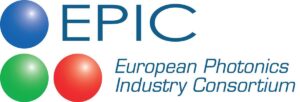Component Design for metasurfaces
With the right arrangement of nano-structures the metasurface can produce any optical reponse. With PlanOpSim software metasurfaces are defined easily and their response calculated. The software collects the full-wave results for each meta-atom. The behaviour of an entire surfac is then calculated using physical optics models. Components can be made both in a forward design where the structures are direclty choosen and placed or by inverse design where the target behaviour of the component is entered and the software determines the metasurface which produces that behaviour. Through combination of meta-atom design and placement, metasurfaces deliver characteristics that are impossible with conventional materials. Any classical optical component can be reproduced on a planar substrate as a metasurface as well.
Inverse design:
optimizing the projection of a holographic image
In real applications the intensity, polarization and spectrum you need, usually isn’t one where a textbook formula for the corresponding wavefront is easily found. PlanOpSim allows you to enter the target behaviour, the optimizer will then iterate through designs until the component matches the target behaviour.
Let’s say you want a diffractive optical element that projects the image of a cat when illuminated by a laser pointer. The optimization algorithm only needs to know the location and intensity of the image to calculate a nanostructure arrangement. Starting from a random first guess, the animation below shows how each trial solution approximates he target behaviour.
PlanOpSims component level calculation is directly integrated with the full wave solutions of the nano-structures that make up the metasurface. When a meta-atom that was not known yet is discovered the model uses the full wave Maxwell equation solver to determine its response. The result is a powerful and versatile program to design metasurfaces. The method is fast enough to scan the design paramaters space in multiple directions. Tens of metalenses can be calculated in a matter of minutes.
Thanks to high speed computation and the integrated full wave solver, PlanOpSim software was able to perform sensitiviy analysis on a metalens where each of the meta-atoms underwent random deformations. Taking the average of multiple lenses reveals critical knowledge for the fabrication of metalenses.
PlanOpSim has the option to analyze the designed meta components with idealized plane waves, but also with Gaussian beams. This allows us for example to visualize the results when the lens is not perfectly overfilled, as would be desired in most applications where efficiency is key.
This also allows us to do a quality check of the designed component towards the robustness in alignment.
PlanOpSim has the option to simulate meta components with idealized plane waves, but also with Gaussian beams. This allows us to create realistic complex designs with ease.
Depending on the application, the meta component should be small or large. Though in either case, a full wave solution is nearly impossible, especially for non-circular symmetric designs.
Based on the combined calculations of RCWA meta cell design and local periodic meta component design, PlanOpSim enables large area design beyond computationally possible with full wave simulations.
** dd 03/10/2023 We can easily calculate 169’000’000 meta cells ( 6,3mm by 6,3 mm ! ) For customers we can do even larger design as a service.
One reason for large area design is the angular resolution of holograms. Independent on the metacell quality, the angular resolution is directly related to the size of the metacomponent. Going from a 100μm component up to a 2mm component gives a tremendous improvement.
A quick estimation of the angular resolution is λ/(component width) [rad], for a 100, 500 and 2000 μm component this results (λ=550nm) in 0,31°; 0,063° and 0,015°
Meta Optic Design has always suffered from having to make the choice between accuracy – large area and simulation speed. ODA is one of the approaches to break this chain.
Meta surfaces design requires calculating nano-structure behavior in macroscale components. A pure full wave approach is extremely memory and time consuming.
The standard approach allows to calculate meta-surfaces in practical times using local periodic approximation (LPA). In 2 steps, first by estimating nano-structure response within unit-cell. And after that populate the meta surface using unit-cell calculations. This allows for the simulation bigger sizes meta surfaces in a significantly faster simulation time. However LPA introduces inaccuracies when the pillars are different from their neighbors.
Overlapping Domain Analysis (ODA) provides improved accuracy with significantly lower time and memory consumption than full wave calculations.
In the realm of design and simulation, we are constantly faced with a multitude of choices and challenges. From optimizing the performance of a product to ensuring its manufacturability and cost-effectiveness, finding the right balance is an art in itself.
The ability to navigate these
trade-offs effectively can lead to innovative breakthroughs and efficient
solutions. Whether it’s striking the perfect balance between form and function,
cost and performance, or speed and accuracy, our ability to make these
decisions is a testament to our expertise.
Depending on the application, the meta component should be small
or large. Though in either case, a full wave solution is nearly impossible,
especially for non-circular symmetric designs. Great design is about
finding ways to reduce complexity without sacrificing value. ODA
gives finally the opportunity to do just that in a pragmatic
way.




© 2024 PLANOPSIM.COM | All rights reserved